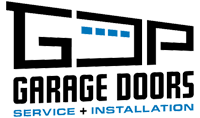Your garage door is one of the most frequently used features of your home, yet it’s often overlooked when it comes to regular maintenance. Ensuring your garage door operates smoothly not only enhances your home’s convenience and security but also extends the door’s lifespan and prevents costly repairs. Regular maintenance doesn’t have to be complicated; with a little time and effort, you can keep your garage door in excellent condition. Here’s why garage door maintenance matters and how to do it.
1. Why Regular Garage Door Maintenance is Important
- Prevents Costly Repairs: Regular inspections and minor fixes can catch small issues before they escalate into expensive repairs or replacements.
- Increases Lifespan: Proper maintenance reduces wear and tear, helping your garage door and its components last longer.
- Enhances Safety: A well-maintained garage door minimizes the risk of accidents caused by malfunctioning components, such as broken springs or misaligned tracks.
- Improves Security: A functional garage door ensures your home remains secure against potential intruders.
- Maintains Convenience: Ensuring smooth operation avoids frustrating disruptions, such as a door that won’t open or close properly.
2. Step-by-Step Guide to Garage Door Maintenance
Step 1: Inspect the Door’s Appearance and Functionality
- Look for signs of wear and tear, such as rust, dents, or cracks on the door panels.
- Open and close the door to check for smooth operation and listen for unusual noises like squeaking or grinding.
Step 2: Check and Tighten Hardware
- Examine hinges, bolts, and brackets for loose or worn-out parts. Tighten any loose screws or bolts using a wrench.
- Replace any damaged hardware to prevent further issues.
Step 3: Lubricate Moving Parts
- Use a silicone-based lubricant or garage door-specific spray to grease moving parts such as rollers, tracks, springs, and hinges.
- Avoid using heavy grease, which can attract dust and dirt, causing buildup.
Step 4: Test the Door Balance
- Disconnect the garage door opener and manually lift the door. It should move smoothly and stay open at waist height without falling.
- If the door feels heavy or doesn’t stay balanced, it may indicate spring issues that require professional attention.
Step 5: Inspect the Weather Stripping
- Check the rubber weather stripping along the bottom of the door for cracks or signs of wear.
- Replace damaged weather stripping to keep out dirt, debris, and weather elements.
Step 6: Test the Auto-Reverse Safety Feature
- Place a small object, like a block of wood, under the door and close it. The door should automatically reverse upon contact with the object.
- If the safety feature doesn’t work, adjust the settings on your garage door opener or consult a professional.
Step 7: Clean the Tracks
- Remove dirt and debris from the door tracks using a damp cloth. Avoid applying lubricant to the tracks, as it can cause the door to slip.
3. When to Call a Professional
While many maintenance tasks can be performed by homeowners, certain issues require professional expertise. Call a garage door technician if you notice:
- Broken or worn springs.
- Frayed cables.
- Persistent balance issues.
- Malfunctioning garage door openers.
Regular garage door maintenance is essential for ensuring safety, convenience, and longevity. By inspecting, cleaning, lubricating, and testing your garage door components, you can prevent costly repairs and maintain a smooth-operating door. Investing a little time in routine maintenance can save you from unnecessary expenses and provide peace of mind. If you’re ever in doubt or face a complex issue, don’t hesitate to contact a professional for assistance. A well-maintained garage door is a key part of a functional and secure home.



